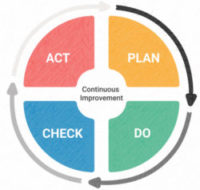Respond, recover, review …
New Zealanders are known for their number 8 wire mentality, their ability to be flexible and adaptable in times of rapid change and their ability to unite. During this pandemic, many organisations and individuals have chosen to do the right thing by people understanding that the health and wellbeing of people is a strategic asset that if enhanced and protected will ensure organisations bounce back, forward and become more resilient, and more productive in the future.
We have moved from level 2 to 4 and now back to level 3. We may be in these various levels for a number of months, and there is no guarantee that we do not have a resurgence in cases of Covid 19, or a different and new disruption to deal with. We need to be adaptive and light-footed to ensure our businesses survive. Reviewing what health and safety and business continuity activities we planned to, and what we have actually done in each level will help us going forward.
For many, the new financial year has heralded in a time characterised by a disruptive and (largely) unexpected pandemic event that threatens to harm the lifeblood of many organisations, the economy and the health and wellbeing of large numbers of people, especially those who are already vulnerable. This pandemic has been characterised by uncertainty, urgency and a quickly changing and evolving environment. Many small businesses are time, cash and resource-poor and an experience such as the Covid 19 pandemic could realistically push them to the wall as they struggle to stay afloat with significantly reduced revenue. For these people, it possibly seems preposterous to be suggesting a review of performance as they struggle to stay afloat. Review and self-reflection are necessary to remain agile and adaptive and will help us to build our capability and continuously improve.
So, if you are struggling and maybe working below capacity and thinking that taking time to reflect on and review your health and safety and business continuity plans and actions is too much to ask then I challenge you to be thinking that both of these areas will build resilience into your business for the next time we have a pandemic or other unplanned disruption.
Protecting and enhancing the health (both physical and mental) and safety of your people is of great strategic importance. A physically and mentally healthy and safe workforce will help you get out of Covid faster and make your business more resilient moving forward. It will help build loyalty, aid selection and retention and no doubt boost your brand.
In terms of business continuity, you may have identified unacceptable areas of risk or single points of failure that have gone unnoticed before but are now causing difficulty in delivering your prioritised products or services. Examples could include reliance on a single supplier which has failed to deliver an essential component, lack of insurance, inability to access the workplace and an inability to work from home, poor relationship with your financial services provider, inadequate information security etc.
Both health and safety and business continuity should be embedded into the business systems, not additional activities sitting on the side. Good health and safety and business continuity are good business.
Within both the health and safety discipline and business continuity the Plan-Do-Check-Act iterative cycle is used and applied to management systems and to each of its individual elements.
|
 |
Now is the time to review our recent response activities against our plans to determine if our plans are fit for purpose, are aligned with our strategic direction and comply with legislation and regulations. This review can take a number of forms depending on the size, complexity, type and location of your organisation. Types of review include audit, self-assessment, quality assurance, performance appraisal, supplier performance and management review.
Audit: Either an internal or external formal, impartial review process that measures an organisations business continuity or health and safety programmes against pre-agreed standards.
Self-assessment: Is an assessment of the organisation’s health and safety and business continuity programmes by those involved in its management and implementation.
Quality assurance: This is a process that ensures that the various outputs from the health and safety and /or business continuity programmes meet the defined requirements.
Performance appraisal: A review of the performance of individuals tasked with roles and responsibilities in health and safety and / or business continuity.
Supplier performance: This is focussed on business continuity and is a review of key suppliers’ business continuity programmes or their recovery services.
Management Review: This is a review by top management to ensure that the health and safety and / or business continuity programmes are suitable, adequate, effective and align with organisational objectives.
The most important thing about “Check” is to actually undertake a review while the experience is fresh in your minds to capture information to enable you to continually improve and enhance your response for the next time we find ourselves responding to an unplanned, fast paced and unpredictable situation.
In addition to the six types of review outlined above it is important to also reflect on the values and strengths of your organisation and how they have been embraced during the Covid experience?
Did the values seem appropriate, or do they need to be re-visited?
What about your strengths? How did you play to your strengths as an organisation, did you stretch them in a new direction, or did you lose sight of them?
What will your organisation be remembered for in terms of how it communicated, supported and valued its people and how will this impact your reputation and brand?
Resilient IT have broad experience in Business Continuity, Health and Safety and Risk Management. We can review current programmes or facilitate interactive workshops to enagage staff in the process of strategic review. Our services are always aligned to international best practise such as ISO22301:2019 and ISO45001 and consider as key inputs the NZ Health and Safety at Work Act 2015.
Contact Pam Mitchell to learn more.


